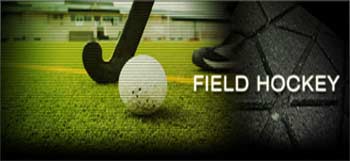The Players Offensively, the defensemen in the game of hockey get the puck to their forwards and trail the play into the aggressive zone, putting themselves just inside their rival's blue line at the points. Center are the players in the quarterback on the field, the center player leads the attack by carrying forward the puck on offense. He then exchanges passes with his wing players to direct the play near the opposing goal. On defense, he attempts to interrupt a play before it comes on his team's side of the field. The wing players are the players who team with the center on the attack to set up blasts on goal. Defensively, they try to halt the plays by their equals and upset shot efforts taken by the opposition team. The Officials Just like players the officials of the game are also of four categories. They are Referee, Linesmen, Goal judges and Official Scorer. Referee is the one who oversees the game, calls for the penalties, decides if goals are counted and handles the face-offs at center field at the start of each period. Two Linesmen are used in the game. They call for the offside, offside pass, glazing and handle all the face-offs occurring at elsewhere other than the center field. They do not call for the penalties, but can actually mention to the referee that a penalty might have to be called. ScoringThere are three diverse ways to notch a goal in field hockey. They are Field goal, Penalty stroke and Penalty corner.Field GoalA goal can only be counted if the shot of the puck is taken inside the shooting circle, a semicircular zone in the anterior of the opponent's goal. The shooting circle is also called as the dee or a D for the defensive side. The pock must be moved by a player on whichever team inside the circle for it to be counted as a goal.Penalty StrokeA penalty stroke is a distinct shot taken on a goal by an offensive player selected by their team. The goalkeeper is the one and only opposite player who can actually defend this shot. A stroke may be given for a variety of reasons. The maximum used reason for a penalty stroke to be obtained is when a defender commits a foul that openly stops a goal from being scored. The penalty shot is taken from a position mentioned to as either the stroke mark or the p-flick.It is placed seven yards or 6.4 meters unswervingly in front of the goal. Game play is still during the penalty stroke and all the players must position outside the circle, 25 yards or 23 meters away. The player must thrust, flick or scoop the ball and is allowed to raise the ball to any elevation. When the stick touches the ball, it should make no different hitting noise else the referee can deny the penalty stroke.Penalty CornerA penalty corner is given when the defensive team breaks a few guidelines within the D, or when a defender performs a deliberate offense external to the circle but within the 25 yard or 23 meters of area. The Game Play is stopped for the penalty corner to permit time for both the sides to set up its particular attack and defense places. Defense is permitted for five defenders, containing the goalie on the end line. One attacker positions on the end line 11 yards or 10 meters away from the goal and thrusts the puck out to the attackers on uppermost portion of the shooting circle who are waiting to yield a shot on goal.First Shot is Actually a Very Hard Hit on the GoalThe remaining players of the defensive team must stop behind the center line till the ball is pressed out by the offensive player. In order for a goal to be counted during a penalty corner shot, the ball needs to travel outer to the shooting circle before an offender can actually take the shot. The received player will then thrust the ball again into the circle for a shot to be taken. The shot has to be taken within the marked circle for the goal to be counted.The first shot is actually a very hard hit on the goal. If the ball is elevated in the air overhead the backboard, the goal will not be counted. The only exclusion to this rule is if the initial shot is a scoop or a flick, shots that are raised in the air with an extended scooping or pushing action. On the international level, the drag flick is known to be the most popular type of elevated shot on short corners. Teams usually have a usual play for short corners. A short corner is the greatest opportunity to score a goal easily in the field hockey, because the offensive team attacks with twofold as many players as the players of the defensive team. Hockey Rules-Umpire Signals
|
Home >
Games >
Hockey >
Hockey Rules




